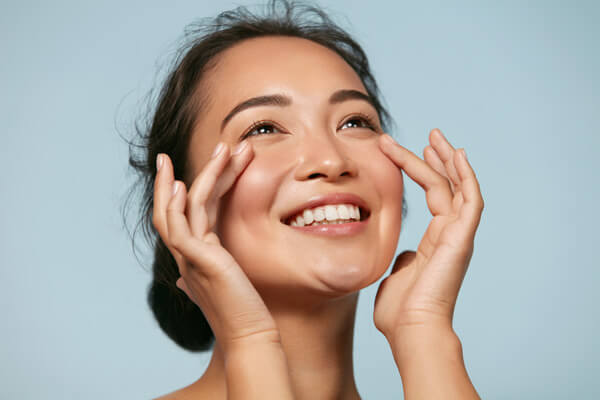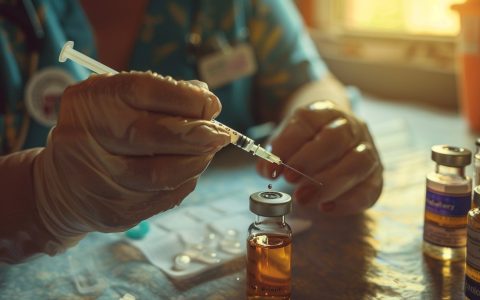
Sunscreen is a staple in our daily skincare routine, acting as a shield against the harmful effects of ultraviolet (UV) radiation from the sun.
Among the myriad of sunscreen options available, the
sunscreen stick has gained popularity for its convenience and ease of application. In this blog, we will unravel the science behind sunscreen sticks, focusing on the key components that make them effective in protecting our skin.
From the intricacies of Sun Protection Factor (SPF) to the significance of safeguarding against both UVA and UVB rays. We will explore how sunscreen sticks contribute to maintaining healthy and radiant skin.
The Basics of Sunscreen Chemistry
To comprehend the science behind sunscreen sticks, one must first delve into the fundamental principles of sunscreen chemistry. The primary function of any sunscreen is to shield the skin from the damaging effects of UV radiation. Which is categorized into two main types: UVA and UVB rays.
UVB rays are responsible for causing sunburn, while UVA rays penetrate the skin more deeply, contributing to premature aging. Both types of UV radiation can also increase the risk of skin cancer. Sunscreen ingredients are categorized into two groups: chemical and physical filters.
Chemical filters, such as avobenzone and octocrylene, work by absorbing UV radiation and transforming it into harmless heat. On the other hand, physical filters, like zinc oxide and titanium dioxide, act as a barrier, reflecting and scattering UV rays away from the skin.
Understanding SPF
Sun Protection Factor (SPF) is a crucial factor when selecting a sunscreen, including sunscreen sticks. SPF indicates the level of protection a product offers against UVB rays, specifically the amount of time it extends before the skin begins to burn compared to unprotected skin.
For instance, an SPF 30 sunscreen theoretically allows an individual to stay in the sun 30 times longer than without protection before experiencing sunburn. However, it’s important to note that SPF does not provide a linear scale of protection; the increase in protection between SPF 30 and SPF 50 is not as significant as one might assume.
SPF 30 blocks about 97% of UVB rays, while SPF 50 blocks approximately 98%. Therefore. The key lies in consistent and thorough application, rather than solely relying on a higher SPF.
Sunscreen sticks typically boast SPF ratings, and their application is similar to that of traditional sunscreen lotions. The stick form offers convenience, making it easy to apply and reapply without the mess often associated with liquid sunscreens.
Additionally, the compact size of sunscreen sticks makes them ideal for on-the-go protection. Fitting seamlessly into purses or pockets for quick touch-ups throughout the day.
UVA and UVB Protection
While SPF primarily measures protection against UVB rays. Effective sunscreens, including sunscreen sticks, should also guard against UVA rays. UVA rays are responsible for premature aging and can contribute to the development of skin cancer. Broad-spectrum sunscreens, which encompass both UVA and UVB protection, are essential for comprehensive sun protection.
The ingredients in sunscreen sticks are carefully formulated to cover this broad spectrum, ensuring that users are shielded from the full range of harmful UV radiation.
Chemical filters like avobenzone are particularly effective against UVA rays. Absorbing and neutralizing the damaging radiation. Titanium dioxide and zinc oxide, common physical filters, provide a broad-spectrum defense by reflecting and scattering both UVA and UVB rays.
When choosing a sunscreen stick, it is advisable to check for ingredients that specifically offer broad-spectrum protection to ensure comprehensive coverage against the entire UV spectrum.
Water Resistance and Sweat Protection
Another crucial consideration in sunscreen efficacy is its resistance to water and sweat. Sunscreen sticks, designed for convenience, are often formulated to be water-resistant, providing extended protection during activities like swimming or exercising.
Water-resistant sunscreens maintain their effectiveness for a specific duration even when exposed to water. It’s important to note that no sunscreen is entirely waterproof, and reapplication is necessary after swimming or sweating to maintain optimal protection.
Water resistance is indicated on sunscreen labels, specifying whether the product is water-resistant for 40 or 80 minutes. Users should be diligent in following the recommended reapplication intervals, especially when engaging in water-based activities.
Sunscreen sticks, with their portable and mess-free application, make it easier to adhere to these reapplication guidelines, encouraging users to maintain consistent protection against the sun’s harmful rays.
Choosing the Right Sunscreen Stick for Your Skin
The diversity of skin types and sensitivities necessitates a personalized approach when selecting sunscreen. Sunscreen sticks are available in various formulations to cater to different skin needs. Including those with sensitive skin, acne-prone skin, or specific skin conditions.
Fragrance-free options, hypoallergenic formulations, and non-comedogenic varieties are common. Ensuring that individuals can find a sunscreen stick that aligns with their skin requirements.
When selecting a sunscreen stick, it’s crucial to consider factors such as skin type, any allergies or sensitivities, and the intended use. For everyday protection, a broad-spectrum sunscreen with at least SPF 30 is recommended. Individuals with specific skin concerns should opt for formulations that address those issues while still providing effective sun protection.
Additionally, regular skin checks and consultations with dermatologists contribute to a holistic approach to sun care, ensuring that any changes in the skin are promptly addressed.
Environmental Impact and Sustainability
Beyond the science of protection, an increasingly important consideration in the realm of sunscreen sticks is their environmental impact. As awareness of climate change and environmental sustainability grows, consumers are becoming more conscious of the ecological footprint of their
skincare products.
Sunscreen ingredients, production processes, and packaging all play a role in determining the environmental friendliness of a sunscreen stick.
Conclusion
In conclusion, the science behind sunscreen sticks is a fascinating exploration of the meticulous formulation required to protect our skin from the sun’s harmful rays.
From the chemistry of sunscreen ingredients to the significance of SPF and broad-spectrum protection, understanding how sunscreen sticks work is essential for making informed choices about sun care.
As a versatile and convenient option, sunscreen sticks offer an accessible way to incorporate sun protection into our daily routines, promoting skin health and minimizing the risks associated with prolonged sun exposure.
Additionally, the integration of sunscreen sticks into popular skincare routines, such as the widely admired Korean skincare routine, showcases their adaptability and acceptance in diverse beauty practices worldwide.
 Sunscreen is a staple in our daily skincare routine, acting as a shield against the harmful effects of ultraviolet (UV) radiation from the sun.
Among the myriad of sunscreen options available, the sunscreen stick has gained popularity for its convenience and ease of application. In this blog, we will unravel the science behind sunscreen sticks, focusing on the key components that make them effective in protecting our skin.
From the intricacies of Sun Protection Factor (SPF) to the significance of safeguarding against both UVA and UVB rays. We will explore how sunscreen sticks contribute to maintaining healthy and radiant skin.
Sunscreen is a staple in our daily skincare routine, acting as a shield against the harmful effects of ultraviolet (UV) radiation from the sun.
Among the myriad of sunscreen options available, the sunscreen stick has gained popularity for its convenience and ease of application. In this blog, we will unravel the science behind sunscreen sticks, focusing on the key components that make them effective in protecting our skin.
From the intricacies of Sun Protection Factor (SPF) to the significance of safeguarding against both UVA and UVB rays. We will explore how sunscreen sticks contribute to maintaining healthy and radiant skin.
 Sunscreen is a staple in our daily skincare routine, acting as a shield against the harmful effects of ultraviolet (UV) radiation from the sun.
Among the myriad of sunscreen options available, the sunscreen stick has gained popularity for its convenience and ease of application. In this blog, we will unravel the science behind sunscreen sticks, focusing on the key components that make them effective in protecting our skin.
From the intricacies of Sun Protection Factor (SPF) to the significance of safeguarding against both UVA and UVB rays. We will explore how sunscreen sticks contribute to maintaining healthy and radiant skin.
Sunscreen is a staple in our daily skincare routine, acting as a shield against the harmful effects of ultraviolet (UV) radiation from the sun.
Among the myriad of sunscreen options available, the sunscreen stick has gained popularity for its convenience and ease of application. In this blog, we will unravel the science behind sunscreen sticks, focusing on the key components that make them effective in protecting our skin.
From the intricacies of Sun Protection Factor (SPF) to the significance of safeguarding against both UVA and UVB rays. We will explore how sunscreen sticks contribute to maintaining healthy and radiant skin.



